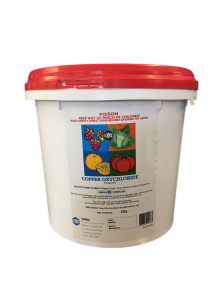
Angular Leaf Spot
Angular leaf spot of cucurbits is caused by Pseudomonas. syringae pv. lachrymans. It affects the leaves, petioles, stems and fruit of cucurbits. Small, circular spots appear first and soon after large, angular to irregular, water-soaked areas develop on the leaves. In wet weather, droplets of bacterial ooze exude from the spots on the lower leaf sides and dry into a whitish crust. Later, the infected areas turn grey, die and shrink, often tearing away from the healthy tissue, falling off and leaving large, irregular holes in the leaves. On susceptible cultivars, the lesions often have yellow margins. On some resistant cultivars, the lesions are smaller and lack yellow margins. Infected fruits show small, almost circular spots that are usually superficial, but when the affected tissues die, they turn white, crack open and let soft-rot fungi and bacteria enter and rot the whole fruit. Infection of young fruit may cause extensive fruit drop. Under good growing conditions, the vines of indeterminate types of cucumber, squashes and melons grow away from older infected leaves, producing sufficient new growth to support normal fruit development. Occasionally in severe infestations, the growing tips of cucumber vines are systemically invaded, become water-soaked, yellow, and stop growing.
How to control Angular Leaf Spot
Copper Oxychloride

Copper Oxychloride is for the control of fungal and bacterial diseases in fruit and vegetable crops, citrus, stone fruit, pome fruit… Read More
Read more